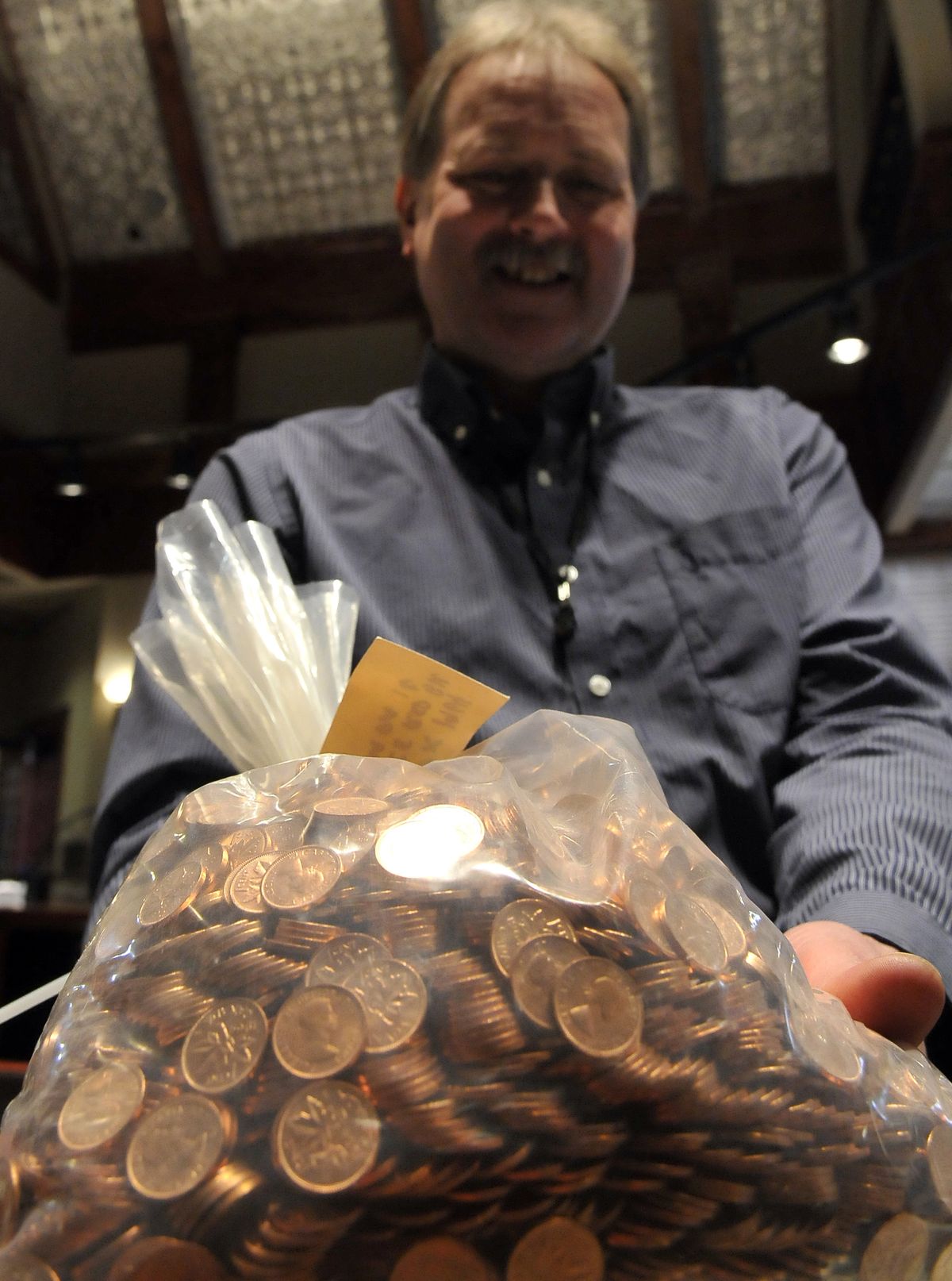Penny phase-out met with modest reaction
Coin dealers likely to be only businesses to see effect

Most Canadians greeted the news that their government would stop minting pennies later this year with tepid approval. This is, after all, the same country that eliminated $1 and $2 paper bills in the 1980s.
South of the border, the reaction could charitably be called muted.
“Once more people know that this is the (last year they’ll be made), they might inspire interest by collectors,” said Court Peterson, a store clerk for Coins Plus, a Spokane coin trader.
“Or it may not.”
The Canadian explanation for ditching the penny came down to saving money in a tough budget year.
It costs 1.6 cents to produce a Canadian penny, with an annual price tag of $11 million. Other countries that have taken the same step include the United Kingdom, Australia, Norway and Switzerland.
Steve Wissink, store director at the Fred Meyer store on Second Avenue and Thor Street in Spokane, said he and his cashiers seldom see Canadian pennies.
The store accepts all Canadian currency and later takes it to the bank to exchange into U.S. dollars.
“Years ago when there was a bigger difference in the dollar value, we wouldn’t take Canadian money,” Wissink said. “Now, if people want to pay, we’ll take it.”
The exchange rate between the currencies stands nearly at par; the Canadian dollar trades at 95.4 cents per U.S. dollar.
The biggest traffic in Canadian pennies is likely seen by area coin dealers.
Jack White, owner of Rain Coin Inc. on North Division, said he sees “a fair number” of people bringing them to his store. They’re people who’ve traveled to Canada or collectors who are selling part of their stash, he said.
“Mostly they come in here or other shops because banks won’t take the coins,” said White.
The only Spokane-area bank that will accept Canadian coins is Washington Trust Bank.
White said he pays about 55 cents for every 100 Canadian pennies. He then ships them to a California company that exchanges them with a Canadian bank.
For every 100 pennies he sends to California he gets back about 75 cents, a net profit of 20 cents.
White and other coin dealers also get some traffic from “copper hoarders” who buy Canadian coins and send them to refiners who extract the copper.
Hoarders aren’t making a lot of money, White said. The amount of copper in each penny is tiny; since 2000 all Canadian pennies have contained just 4.5 percent copper. (The U.S. penny has 2.5 percent copper.)
The real find for hoarders are Canadian pennies minted before 1987. Up until then the coins contained 98 percent copper.
Even Coinstar, the Bellevue-based company that has more than 20,000 coin-exchange kiosks across North America, doesn’t bother with Canadian pennies. The company’s automated money changers are programmed to kick out any non-U.S. coins, said spokeswoman Sarah Ward Jones.
Tami Ferguson, a vice president with Washington Trust Bank, said the change in Canada means the bank will be watching to see if many pennies come in from now on.
If customers bring in a small number of Canadian pennies, the bank will take them. But if a customer brings in a large number, they may be out of luck, Ferguson said.